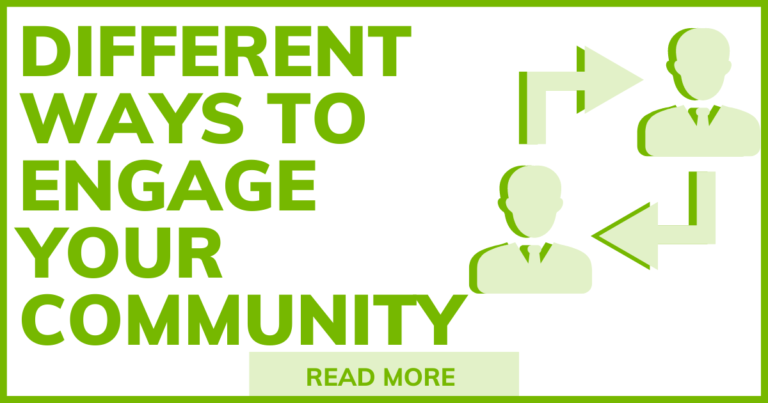Different Ways to Engage Your Community

Engagement is a way to create relationships and build trust with local residents and diverse groups within your community. It is important for both your charity’s advocacy and fundraising that the local people who are interacting with your project are able to feel that they can both feedback and influence your engagement process as it develops.
When first planning and undertaking community engagement activities, it is important to keep in mind any possible barriers to engagement.
This can include:
◼️ Language
◼️ Accessibility Needs
◼️ Local Environment
◼️ Way to interact with hard-to-reach groups
◼️ People’s availability to get involved.
In addition, think of the different ways that members of the community may want to be involved in the engagement process, such as:
◼️ Attending Events
◼️ Being an ambassador for their group
◼️ Getting information in their first language
◼️ Being involved in the designing of the engagement process
◼️ Helping in delivering activities
When looking to create your engagement process you may need to be strategic in how you target particular parts of the community to achieve maximum effect. This means you need to make sure you know who the target group is and that each group may need a different approach.
When you begin to undertake your community research and engagement, make sure you focus on the positives and the strengths of your cause and why it is important that they engage with the cause because of the positive impact they could make on the Community. You will have to talk about problems within the community that you are looking to overcome but do not dwell in the negative but recognise and point out the assets in and of the community.
So how do you get people involved. Let us say you are looking to engage with older local residents and have created monthly conversation sessions to reach out to older people at risk of becoming isolated.
Initially you may start by putting up notices in local places that older residents go, such as a coffee shop or library. You may look to spend time in a local care home or sheltered accommodation to talk to residents and promote the project.
As you stay connected by the methods above and build your relationships, you can ask the people engaging with you what shape they want the sessions to take, what the individuals wanted to do in the sessions and what format they would feel most comfortable with.
Being flexible is one of the most important things to remember when engaging local people and groups. It is important to make sure there is space for people to come in and out of the project as they need to, and to always keep the door open to them.
People have a range of responsibilities and events happening in their lives which may mean they need to disengage for a while. Staying connected even when they are not able to be involved helps to encourage them to take part again when they are able to.
Like so much in the voluntary sector. there is not one method that fits all, and engagement is an on-going process of reaching out to a range of people to hear their ideas and opinions, and to involve them in decisions and activities happening in their local area.
Here are some tips for engaging the local community:
◼️ Conversations are key. Building relationships and making meaningful connections are the best way to encourage people to get involved.
◼️ Make it personal. Get to know the people you are engaging with, their needs and how they would like to get involved.
◼️ Meet people where they are most comfortable. Make it easy and comfortable for people to get involved in the project by going to meet people in familiar places where they usually spend time.
◼️ Do not make assumptions. Do not assume people will or will not want to get involved, or that they are already aware of the project.
◼️ Keep people’s options varied and flexible. Use a range of techniques and activities to engage people. Residents will get involved in different ways throughout the project so make sure it is easy for people to get involved in a way that suits them.
◼️ Make use of all suitable space within your community. Hold events at different venues to reach different members of the community.
◼️ Be visible and be available. Make sure people know about the project and that they can easily get involved and ask questions.
◼️ Map your community. Get to know the different areas and groups in the community, and tailor your engagement to suit different people.
◼️ Know the context. Make sure you are aware of any external factors which may influence how people engage with the project.
◼️ Keep an open mind. Be warm and friendly and keep in mind people’s other responsibilities.
◼️ Stay connected. Feedback on progress to keep people updated even if there is not a lot of activity happening, you can still remind people of the ways they can get involved.
Found this article helpful?
NPG IS HERE TO HELP YOU
We combine ROI-oriented grant fundraising with story driven proposals, we create fundraising campaigns with compelling narratives that exceed fundraising and growth goals. We begin each project with a full understanding and firm commitment to your strategic objectives.
This holiday season, we’re extending an offer you can’t pass up. Non Profit Growth is offering our comprehensive Grant Fundraising Support Package at 25% OFF

- Non Profit Growth (NPG)
-
86-90 Paul Street, London,
EC2A 4NE - hello@nonprofitgrowth.co.uk
- 0800 464 7747
